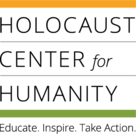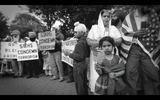
Holocaust education is history, literature, social studies, psychology, art, and so much more. By studying the Holocaust we learn the importance of speaking out against bigotry and indifference, promoting equity, and taking action. Studies show that Holocaust education both improves students' critical thinking skills and encourages "upstander" behavior: willingness to act upon civic awareness and confront hatred in all its forms. On this site you're going to find lessons that adhere to the requisite guidelines for teaching about the Holocaust and Genocide, with options for in-person and remote instruction. Each Overview Lesson includes:Historical summarySurvivor video clipsDiscussion questionsCommon Core State Standards addressed in that lesson
- Subject:
- Arts and Humanities
- Ethnic Studies
- Social Science
- World History
- Material Type:
- Primary Source
- Teaching/Learning Strategy
- Author:
- Kari Tally
- Washington OSPI OER Project
- OSPI Social Studies
- Date Added:
- 04/14/2021


